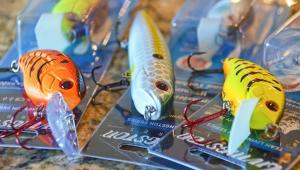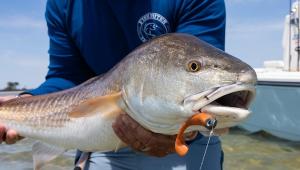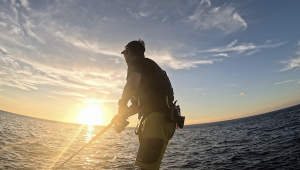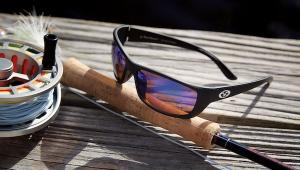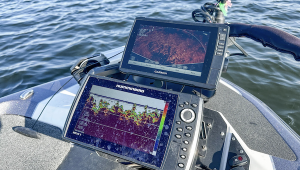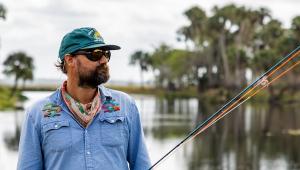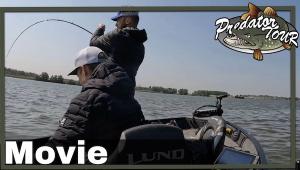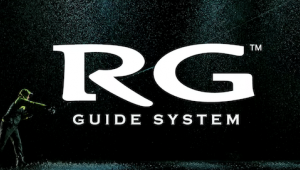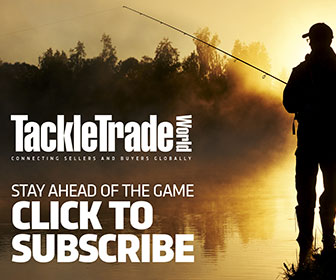Get your teeth into predator tackle
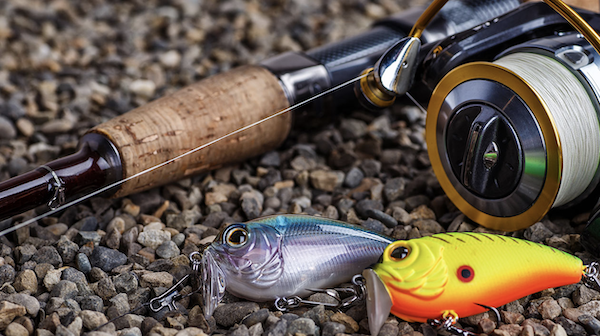
Predator fishing is an exhilarating sport that combines skill, strategy, and an intimate knowledge of aquatic ecosystems. It’s also a fantastic money-spinning opportunity for our businesses.
Unlike traditional fishing, predator fishing specifically targets carnivorous fish known for their aggressive behaviour and formidable presence.
As a result, anglers desire dedicated gear – from specific rods and reels to lures, hooks, lines, nets and other accessories, all with the aim of making this thrilling pursuit easy and effective.
Predator passion
Predator fishing is more than just a hobby; it’s a passion that involves the pursuit of apex aquatic predators like pike, muskellunge (muskie), bass, perch and catfish, among others – and that’s just in freshwater.
These fish are renowned for their size, strength and elusive nature, making them prized targets for anglers. The allure of predator fishing lies in the challenge it presents – understanding the behaviour of these species, selecting the right gear, and employing effective techniques to outsmart and catch them.
Predatory fish are typically ambush hunters, relying on stealth and surprise to capture their prey. They are often found near structures like submerged logs, weed beds, and rocky outcrops, which provide cover and vantage points for ambushing prey. Seasonal changes, water temperature, and prey availability also influence their behaviour and movement patterns.
As water temperatures rise in spring, predators become more active. This is a prime time for anglers as fish move to shallower waters to spawn and feed, so be sure you have stocked up accordingly on the correct gear.
Warm water in summer can drive predators to deeper, cooler areas. Early morning and late evening are often the best times to fish, so items like head torches and illumination, not to mention extra clothing layers, might be useful stock items.
Predators feed aggressively in the autumn / fall to build energy reserves for winter, making this a peak season. Good stocks of the right lures and plenty of clothing options will see your tills ringing at this time of year.
Cold water slows down fish activity in winter but ice fishing can still yield impressive catches for those willing to brave the elements. Drop shotting and similar methods come into their own, too, especially on European waters, where the fish don‘t want to move around too much.
At the same time, this is when many anglers replace or upgrade their gear – so a selection of species-appropriate rods, reels and lines is always handy to have on the shelves or in your inventory.
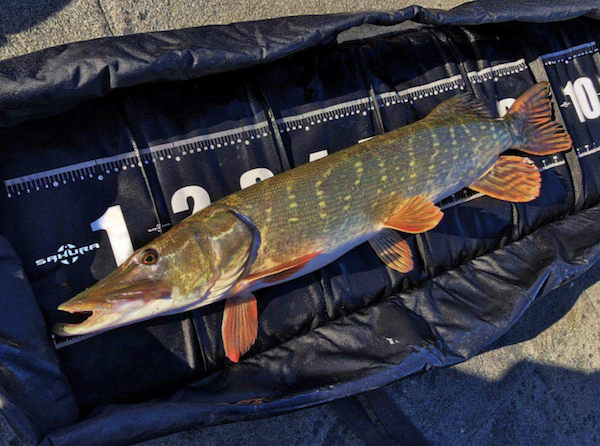
The essentials
The right gear can make or break a predator fishing expedition. While each species is different and will require various gear, here are a few general suggestions to get you started:
A medium to heavy-action rod is ideal for predator fishing. The rod should be sturdy enough to handle the power and size of your target quarry and, if lure fishing, have the right action to impart the desired movement to your bait. Casting live or dead baits will require a strong rod with plenty of backbone
A high-quality baitcasting reel or a robust spinning reel with a smooth drag system is crucial. These offer better control and durability when battling large fish.
Braided lines are preferred by many for their strength and sensitivity, allowing anglers to feel even the slightest nibble while steel or fluorocarbon leaders are essential to prevent sharp-toothed predators like pike from cutting through the line.
Predator fishing lures mimic the movement of prey. Common types include crankbaits, spinnerbaits, jerkbaits and soft plastics. Each type has its own unique action and appeal. Find out what works for the species in your area and remember many patterns are available in different sizes and a wide spectrum of colour options.
Live bait like minnows, shiners and worms can be highly effective, particularly for species like bass and catfish.
All in the technique
Effective predator fishing techniques require a blend of patience, precision and adaptability.
Casting lures near structures and retrieving them with varied speeds and patterns can trigger strikes from predatory fish. Techniques like “jerk and pause” or “stop and go” simulate the erratic movement of injured prey, enticing predators to attack.
Alternatively, trolling involves dragging lures behind a moving boat at various speeds. This technique covers a large area of water, increasing the chances of encountering active predators. Downriggers and planer boards can help maintain lure depth and spread.
Jigging is particularly effective in deeper waters. It involves lifting and dropping a weighted lure (jig) to mimic the movement of prey. Vertical jigging is a popular method for targeting fish near the bottom or suspended in the water column.
Fly fishing for predators like pike and bass adds an extra layer of challenge and excitement. Large, flashy flies that mimic baitfish or frogs can provoke aggressive strikes. This method requires skill in casting and retrieving large flies.
Top targets
Understanding the characteristics and habits of various predator species can enhance the fishing experience. Here are some of the most sought-after predator fish…
Known for their razor-sharp teeth and aggressive behaviour, pike are apex predators found in freshwater lakes and rivers. They prefer weedy or vegetated areas where they can ambush prey.
Often called the “fish of 10,000 casts,” muskies are elusive and challenging to catch. They inhabit similar environments as pike and require patience and persistence to hook.
Largemouth and smallmouth bass are popular targets in many countries due to their abundance and spirited fights. Bass are versatile feeders found in lakes, rivers, and reservoirs, often near structures and cover.
Catfish are bottom-dwelling predators known for their size and strength. They are often caught using live or cut bait and are most active during the night or in murky waters.
Zander, sometimes called pikeperch, are predominantly found in western Eurasia and have been introduced – often with controversy – to the UK as well as southern Europe not to mention parts of Africa and Siberia, thanks to its adaptability to slow-moving, murky water. They will readily take both bait and lures.
Prime markets
Predator fishing hotspots vary by region, each offering unique opportunities and challenges but the locations below will help you get started with the right gear in stock.
North America’s Great Lakes are home to massive pike, muskies, and bass, offering diverse habitats and plentiful opportunities.
Renowned for its largemouth bass fishing, Florida’s lakes and waterways are a bass angler’s paradise while the mighty Mississippi River is known for its trophy catfish.
In Europe, anglers head to Ireland for lakes and rivers teeming with pike, Sweden’s archipelagos and lakes provide excellent conditions for pike and perch fishing while Spain’s Ebro River is a top spot for catfish, attracting anglers from around the world.
Conservation counts
Responsible predator fishing includes practicing catch and release, respecting size and bag limits and ensuring minimal impact on aquatic ecosystems. Conservation efforts help maintain healthy fish populations and sustainable fishing practices for future generations.
With that in mind, items worth considering may include barbless hooks or trebles to minimise injury, while wet gloves will aid with unhooking. Mats and soft-meshed nets will also minimise damage to the fish, which should be released quickly and carefully to reduce stress and increase survival rates.
- Log in or register to post comments
